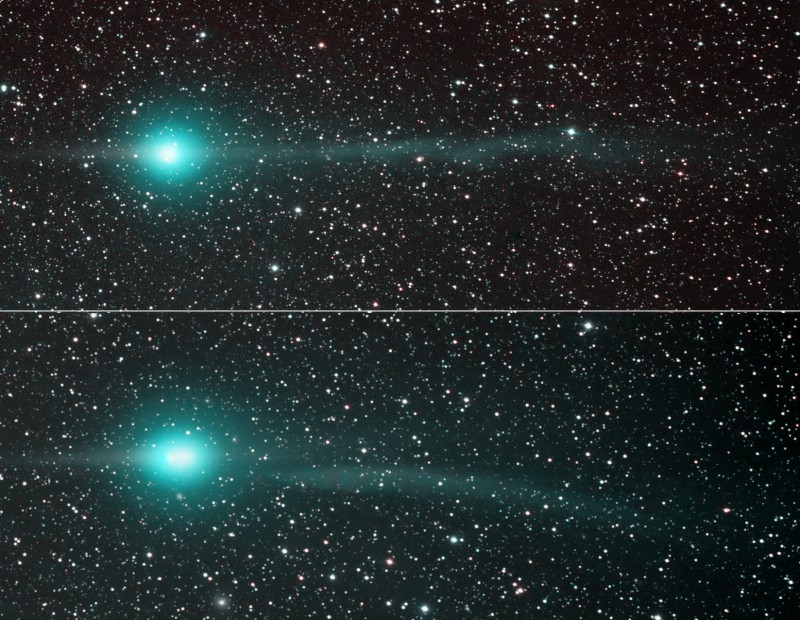Credit & Copyright: Joseph Brimacombe
Explanation:
Sweeping through the inner solar system,
Comet Lulin
is easily visible in both
northern and
southern
hemispheres
with binoculars or a small telescope.
Recent changes in Lulin's lovely
greenish coma and
tails are featured in this two panel comparison of
images taken on January 31st (top) and February 4th.
Taken from dark New Mexico Skies, the images span over 2 degrees.
In both views the comet sports an apparent
antitail at the left -- the comet's
dust tail appearing almost edge on
from an earth-based perspective as it trails behind in
Lulin's
orbit.
Extending to the right of the coma, away from the Sun,
is the beautiful ion
tail.
Remarkably, as captured in the bottom panel, Comet Lulin's
ion tail became disconnected on February 4,
likely buffeted and torn away by magnetic fields in
the solar wind.
In 2007 NASA satellites recorded a similar disconnection event
for Comet Encke.
Don't worry, though.
Comet tails can grow back.
1999 2000 2001 2002 2003 2004 2005 2006 2007 2008 2009 2010 2011 2012 2013 2014 2015 2016 2017 2018 2019 2020 2021 2022 2023 2024 2025 |
Yanvar' Fevral' Mart Aprel' Mai Iyun' Iyul' Avgust Sentyabr' Oktyabr' Noyabr' Dekabr' |
NASA Web Site Statements, Warnings, and Disclaimers
NASA Official: Jay Norris. Specific rights apply.
A service of: LHEA at NASA / GSFC
& Michigan Tech. U.
|
Publikacii s klyuchevymi slovami:
kometnye hvosty - komety - koma
Publikacii so slovami: kometnye hvosty - komety - koma | |
Sm. takzhe:
Vse publikacii na tu zhe temu >> | |
